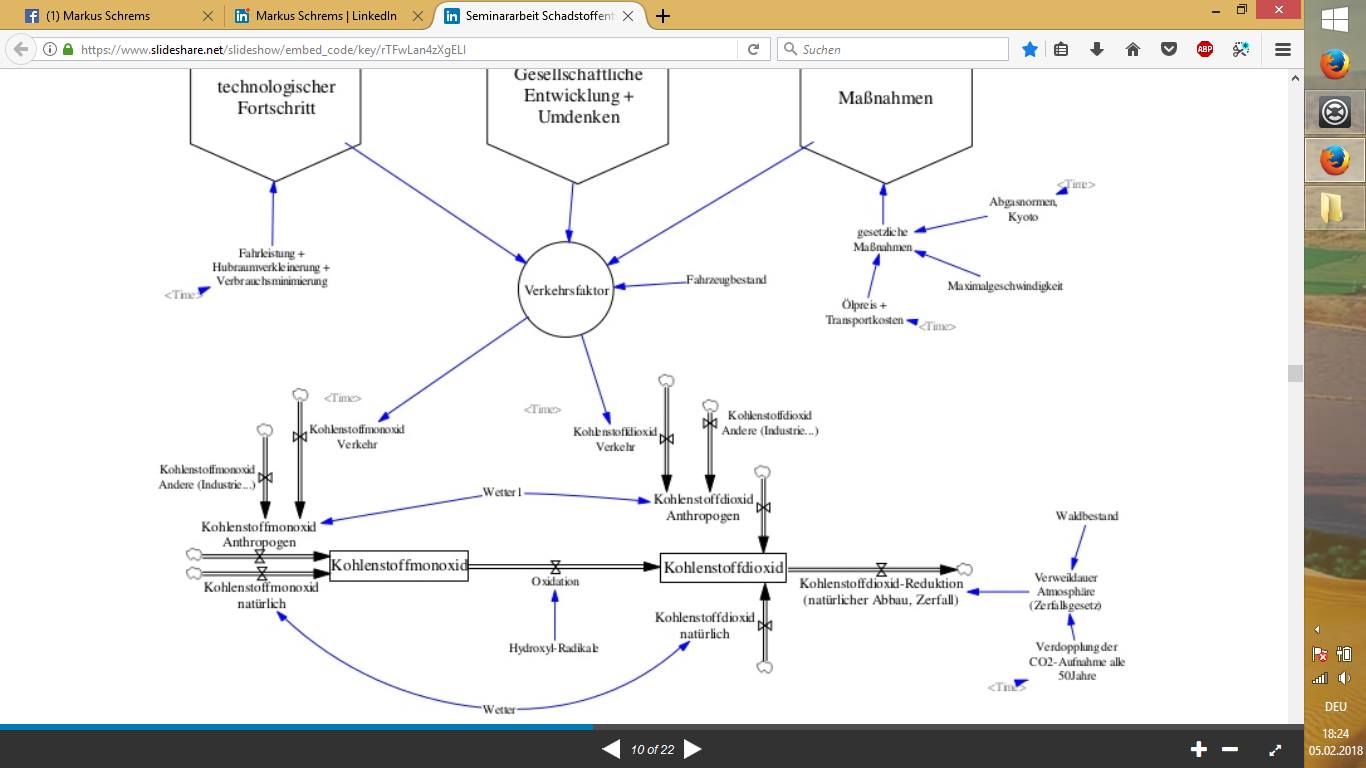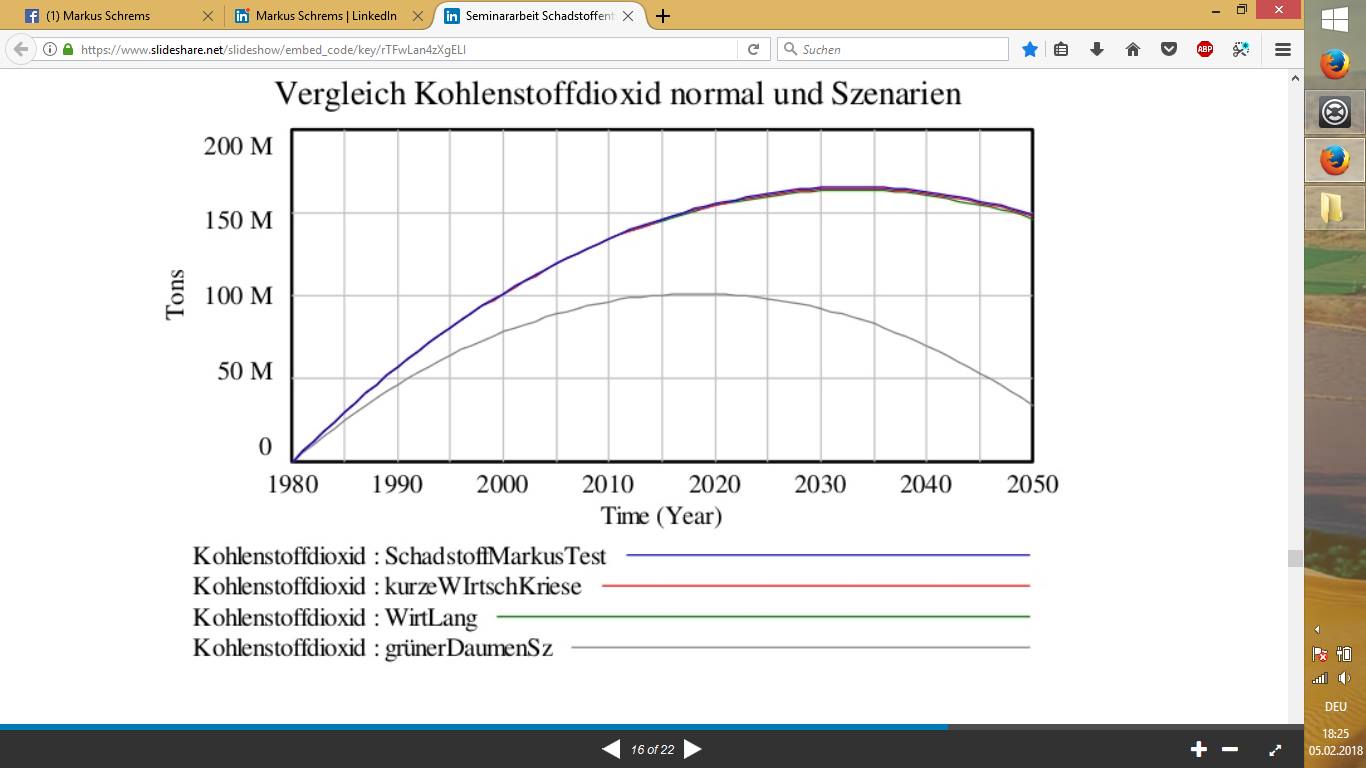



livros
O projeto Space Populating é um sistema de aceleradores eletromagnéticos que começa em a lua; como o C.E.R.N. mas maior e direto para nos atirar em alta velocidade no universo.

acelerador eletromagnético como o CERN, mas maior e direto para naves espaciais

Canhão elétrico eletromagnético
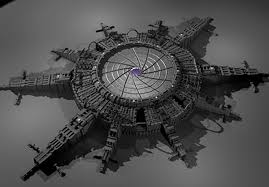
Portão e Estação da Lua
Um canhão eletromagnético pode acelerar um projétil em 5 [metros] até aproximadamente 10.000 [km/h] dividido por 3,6 = 2780 [m/s].
v^2 = u^2 + 2as
onde a é a aceleração, v é a velocidade final, u é a velocidade inicial e s é o deslocamento. u = 0
a = v^2 / (2s)
a = 2780^2 [m/s] / (2 * 5 [m])
a ≈ 772 840 m/s^2
Agora, podemos usar a mesma aceleração para calcular a velocidade final da nave na Lua. Como temos a distância percorrida de 3.000.000 [m] (diâmetro da lua), podemos usar a seguinte equação:
v^2 = u^2 + 2as
Damos que a distância percorrida é de 3.000.000 metros, então:
v = √(2as)v = √(2 * 772 840 * 3.000.000)
v ≈ 2 153 379 m/s = 7 752 163 [km/h]]
Warp-Bubble Fanaticalfuturist.com-article
Warp-Bubble epj - european physical journal-article
 Alcubierre-Drive
Alcubierre-Drive

Warp-Bubble
Uma fazenda de frutos do mar com a superfície do estado de Nova York poderia alimentar o mundo inteiro.
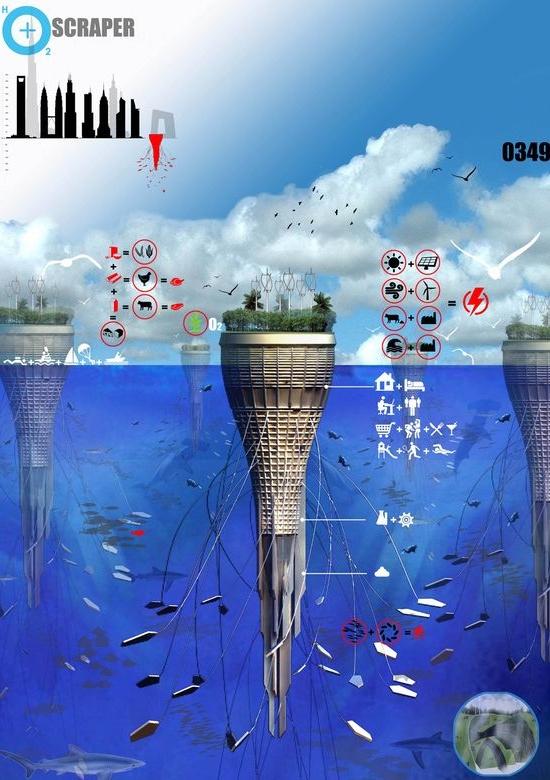
Ocean Bottom Scraper, gigantesca fazenda de frutos do mar
Esclerose múltipla, epilepsia, borreliose de Lyme, doença de Alzheimer, doença de Chron, ataque cardíaco, paralisia cerebral, asma, todas as doenças relacionadas ao reumatismo, doenças causadas por bactérias, senil Maculopatia, descolamento de retina, lúpus eritematoso, impotência, todos os tipos de paralisia e doenças especiais aqueles após acidentes, doenças herpéticas, como herpes labial e herpes genital, zumbido, Todos os tipos de tumores e especialmente os de pulmão, estômago, próstata, pele (taxa de sucesso de quase 100% para melanomas malignos após tratamento adequado), tumores dos lábios, da língua, perda de cabelo, arritmias cardíacas, ataques de pânico, melhoria da inteligência crianças em idade escolar, autismo, doenças relacionadas ao diabetes, retinopatia diabética, Parkinson e muitos, muitos mais.
Curismo Youtube

A empresa inventou um processo para produzir um granulado a partir do dióxido de carbono no ar e usá-lo como combustível.
Uma instalação absorve tanto CO2 quanto 40 milhões de árvores; cada posto de gasolina tem uma instalação para produzir o combustível no local.

Engenharia de Carbono
Wikipédia sobre combustível sintético

CO2-Engine

BoylesFlaskAdvanced (Pedido de patente: rejeitado)
O Flask de Robert Boyle funciona com cerveja até que o ácido carbônico desapareça. O vídeo em youtube.com se chama: "Boyle's flask works now". Adicionando uma roda d'água como gerador e um aspersor para infiltrar dióxido de carbono ou bolhas de gás ou um tanque de ácido carbônico o ciclo é mantido para ganhar energia.

BoylesFlaskPerpetual

BiomechanicsTree
A Árvore Sequoia na América do Norte pode transportar água a mais de 100 metros de altura, de alguma forma deveria haver a possibilidade de usar este mecanismo para ganhar energia.

Usina Capilar Sequoyah

Central de energia de etapa capilar Sequoyah
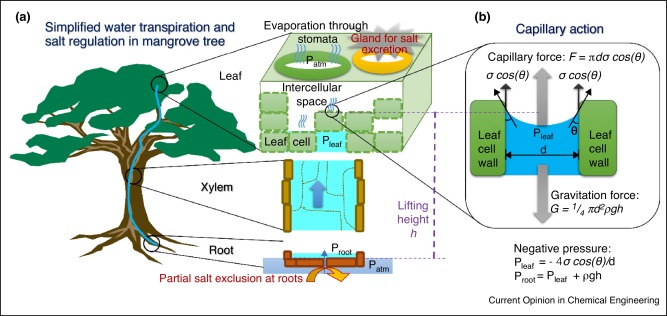
ProspectsOfArtificialTreeForSolarDesalination
ProspectsOfArtificialTreeForSolarDesalination-ScienceDirect
Passive water ascent in a tall, scalable synthetic tree - Nature Magazine

CapillaryFormula
h = altura de subida; σ = tensão superficial; θ = ângulo de contato; ϱ = densidade; g = aceleração da gravidade; r = raio.

Capillary Waterwheel

YCapillary fills untill both upper ends

Schrems-Capilar: deverá preencher-se completamente, mas um protótipo com medidas: k = 3cm; L = 1m; d1 = 0,8 mm; d2 = 0,4mm; d3 = 0,02 mm não funcionou. Ele se encheu, mas a pressão em d2 estava muito baixo, então não desviou para lá.

O capilar da válvula suga o líquido de acordo com o efeito capilar do diâmetro do Altura de elevação dependente do capilar (2), em que a válvula/membrana (3) está fechado. A válvula/membrana deve ser projetada de forma a colmatar o efeito capilar, caso contrário Um capilar só enche até uma altura, apesar do riser ser maior que o comprimento do tubo abaixo da abertura superior ou de uma abertura lateral. Então a válvula/diafragma (3) abre para descarregar o líquido em um nível mais alto na pressão de gravidade P. Então ele fecha a válvula/membrana (3) e o novo líquido é aspirado pelo efeito capilar….


O capilar umectante (1) absorve a água até a altura de subida h (2), que depende do diâmetro, e é curvado para baixo na área superior. A tela umectante (3) é mais fina na ponta que o capilar e o ângulo de contato é muito pequeno, o que significa que o líquido transborda e escorre pela parte inferior da tela. Com tratamento de superfície A humedecimento pode ser aumentada, por exemplo, com plasma ou outros métodos.
Uma empresa de sopro de vidro produz o capilar e a tela umectante para mim... .


A empresa de sopro de vidro não produziu direito. Os capilares estão bem feitos, mas o WettingScreen é muito grande,
não cabe no capilar e não foi aberto na extremidade superior. Tentei misturar o experimento com o
toalha de papel, mas ainda assim não cai/desvia. Os físicos profissionais deveriam fazer isso! Profissionais poderiam fazer isso funcionar.
Se você agora usa o umectante capilar com o método do vídeo: "Ação capilar em plantas experimente com papel toalha" combinados, é lógico que o capilar possa ser desviado para um nível mais alto com papel toalha através de umedecimento, efeito capilar e a gravidade contra a força de retenção do capilar porque a transição da água de um copo para outro é mais difícil do que isso.
WettingCapillaryPublication.pdf

Wetting capillary experiment: Comprei tubos de vidro que esquentei no fogo e tirei do capilar, foi difícil e precisei de muitas tentativas. A princípio a toalha de papel chegou abaixo do nível do copo e pingou. Quando encurtei a toalha de papel acima do nível da água, o capilar encheu, a toalha de papel ficou completamente molhado/molhado, mas não pingou.
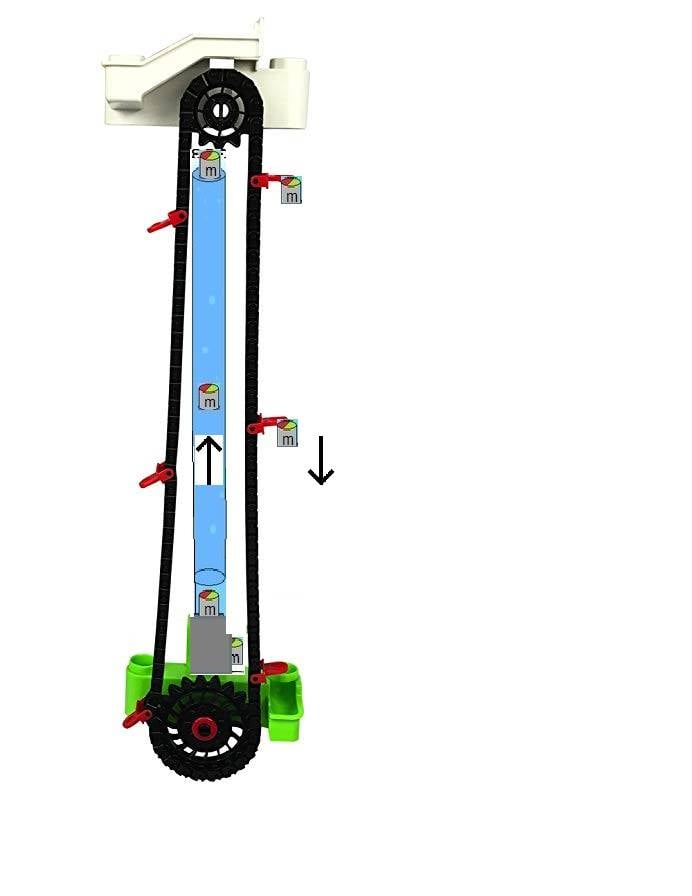
UpliftLift
Massas mais leves que a água infiltram-se na coluna de água e movem-se através dela elevação hidrostática para cima. Na extremidade superior as massas são levantadas pelo elevador e montados no elevador, eles caem para baixo para manter o elevador em movimento para gerar energia. O elevador de elevação também pode ser operado com óleo em vez de massas e fazer a infiltração com um bico.
Meus pedidos de patente vão na direção do movimento perpétuo e da consciência Mantenho-me calado sobre a produção de energia ou de electricidade porque, caso contrário, Ocorre 100% de rejeição. No entanto, com base na minha convicção, sou da opinião que... Ciclo de Carnot, leis de conservação de energia e a prova da impossibilidade de um Perpetuum mobiles, ou seja, eficiência menor ou igual a 1 SOMENTE para máquinas termodinâmicas como motores se aplica e há uma lacuna.
Wikipedia Lei da conservação de energia

Desertificação
Para acelerar um ser humano em 6G até metade da velocidade da luz, são necessários 29 dias ou 2527232 segundos de aceleração.
t = (c/2)/a = (149896229[m/s]) / 59[m/s^2] = 2527232 segundos
A energia total necessária para acelerar uma nave espacial de 1.000 kg até metade da velocidade da luz em 6G é aproximadamente:
W = F * d
F = 1000 [kg] * 59,28 [m/s^2]
F = 59280 [N]
d = (1/2) * a * t^2
d = (1/2) * 59 [m/s^2] * (2527232 [s])^2
d = 2 * 10^14 [metros]
W = F * d
L = 59280 [N] * 2 * 10^14 [m]
W = 1*10^19 [joules]
Para determinar a quantidade de energia que um único reator Tokamak ITER pode produzir em 29 dias, precisamos converter 29 dias em segundos, que são 2527232 segundos. A energia produzida por um único reator Tokamak ITER com potência de 1,5 GW em 29 dias é:energia = potência * tempo
energia = 1,5 [GW] * 2527232 [segundos]
energia = 4 * 10^15 [joules]
W / energia = 1*10^19 [joules] / (4 * 10^15 [joules]) = 2.500
Portanto, seriam necessários aproximadamente 2.500 reatores Tokamak ITER, cada um produzindo 1,5 GW de energia, funcionando continuamente por 29 dias para gerar a energia necessária para acelerar uma nave espacial de 1.000 kg à metade da velocidade da luz em 6G.ou
E_cinético = (1/2)*m*v²
E_cinético = (1/2) * 1000 [kg] * (149896229 [m/s])^2
E_cinético = 1 * 10^19 [joules]
...
Por que um pote de pipoca quebra?
ImpulseCover > ImpulseBottom + Recuo de aceleração

Máquinas de pipocaLandspeeder

Máquinas de bolas de tênis Land Speeder
Atire bolas de ferro diagonalmente para cima no teto da câmara para que o bolas caindo podem ser recicladas.
Eu uso aceleração eletromagnética com as bolas no centro de uma em forma de anel acelerador eletromagnético, ou seja, no centro de um cilindro oco ou bobina ter nenhum ou mínimo recuo.
Sob nenhuma circunstância com um canhão elétrico, pois o recuo é muito grande.
Conservação do momento: m_1*v_1 + m_2*v_2 = m_1*v_1' + m_2*v_2'
Mas há um fluxo de massa circulante:
Q é fluxo (Q = V/t em m³/s)
ρ é a densidade (kg/m³)
V é o volume (em m³)
m é a massa (em kg)
g é a aceleração gravitacional (9,8 m/s2)
v é a velocidade (em m/s)
t é o tempo (em segundos)
Impulso: p = m*v
Força: F = m*dv/dt = m*a
Mas a fórmula deveria ser algo assim:
F_g = (Δv*m)/dt = (Δv*V*ρ)/dt = Δv*Q*ρ = Δv*Q*γ/g = Δv*ṁ
Δv é a diferença na velocidade do impulso na tampa em comparação com o impulso na parte inferior
γ peso específico em N/m³ = kg/(m²s²)

Aceleração eletromagnética de bolaLandspeeder

Acelerador EletromagnéticoLandspeeder
Um motor gera a energia para aceleração eletromagnética. Várias dessas câmaras aceleradoras eletromagnéticas de esferas de ferro serão criadas combinados para criar uma carga como um skate ou um carro flutuar ou voar.
 Arma de bobina
Arma de bobina
Arma de bobina
v_end = ((2*V* μ_0*χ_m*n²*I²)/m)^1/2
m é a massa do projétil
V é projétil de volume
χ_m é suscetibilidade magnética
μ_0 é a permeabilidade ao vácuo 4π × 10−7 V*s/(A*m)
I é atual em amperes
n é o número de voltas da bobina por unidade de comprimento da bobina, obtido pela divisão do O total de voltas da bobina pode ser determinado pelo comprimento total da bobina em metros
Arma de bobina de força:
F = (0,5 * B ^ 2 * A * n * l * I ^ 2) / d
B é a intensidade do campo magnético dentro da bobina (Tesla)
A é a área da seção transversal da bobina (metros quadrados)
n é o número de voltas na bobina
l é o comprimento da bobina (metros)
I é a corrente que flui através da bobina (amperes)
d é a distância sobre a qual a força é aplicada (metros)
Físicos usam a mecânica quântica para extrair energia do nada - quantamagazine.org




Eu uso lasers de 200kW, detectores e espelhos de silício estáticos de reflexão total em vez das pás da turbina e a turbina é girada por causa da flutuação quântica, ruído quântico e a pressão de radiação.
turbinas de flutuação de campo quântico advogado de patentes.pdf
Flutuações quânticas podem balançar objetos na escala humana - M.I.T. Laboratório LIGO
Quantum fluctuations can jiggle objects on the human scale.pdf
COM. Publicação da revista natureza do Laboratório LIGO

A pressão de radiação
p_st ou pressão luminosa é a pressão que atua sobre uma superfície devido à radiação eletromagnética absorvida, emitida ou refletida. Durante a absorção e emissão, a pressão de radiação é igual à intensidade I da onda dividida pela velocidade da luz c: p_st = I/c com as unidades p_st = N/m² = J/m³ = Pa (Pascal); com reflexão completa, a pressão de radiação é duas vezes maior do que com absorção completa. Um fóton de frequência ν transporta a energia: E = h * ν (ver efeito fotoelétrico) com a constante de Planck h.
Devido à relação energia-momento E = (p²*c² + m²*c4)^1/2 Para o fóton com massa m = 0 segue-se um impulso p com magnitude: | p | = h*ν /c
Modelo de onda: A pressão que um campo de radiação no vácuo exerce sobre uma superfície pode ser determinada por: Expresse o tensor de tensão de Maxwell (T i j). Com uma superfície absorvente Vetor normal n, a pressão de radiação é dada por: p_st*nj = ∑ Tij*ni Os componentes do tensor de tensão de Maxwell podem ser derivados do elétrico Calcule a intensidade do campo E e a densidade do fluxo magnético B:
Tij = (1/2)*( ε_0*E² + B²/ μ_0 )*δij − ε_0*Ei*Ej − Bi*Bj/ μ_0
onde δij é o delta de Kronecker, ε_0 é a constante do campo elétrico e μ_0 é constante do campo magnético é.
Ruído quântico
é criado pela quantização da radiação eletromagnética e tem um espectro espectral Densidade de potência de hf. Para comprimentos de onda ≤ 10 μm, predomina o ruído térmico. Os receptores ópticos na faixa visível requerem, portanto, potências de sinal significativamente maiores do que na faixa de frequências eletrônicas. Isso ocorre quando átomos ou partículas subatômicas (elétrons, fótons ou... partículas ainda menores) estão envolvidas em uma transição de nível energético (“salto quântico”). Os valores medidos correspondentes (e, portanto, os resultados do cálculo) estão sujeitos a um Distribuição de probabilidade e são matemática e probabilisticamente corretas, no No entanto, na prática computacional, muitas vezes é insatisfatório ou mesmo inutilizável.
Até o momento, não existe uma formulação da força que as flutuações quânticas exercem

Mecânica de ventilador manual (3) com mola de retorno (4), alavanca de acionamento (1) e engrenagem de transmissão (2)
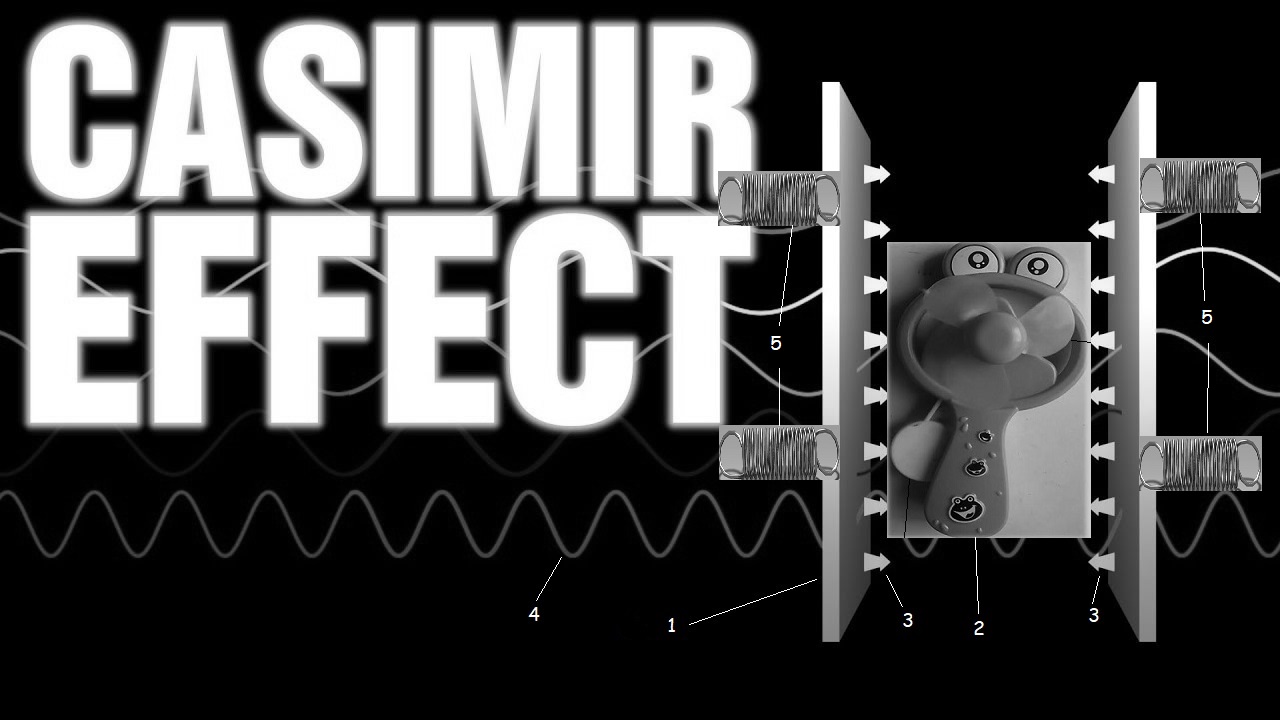
composto por painéis de efeito Casimir (1), ventilador manual (2) com Molas de retorno (5), força de Casimir (3) e campos/flutuações quânticas em diferentes comprimentos de onda (4)
O leque manual cria o efeito Casimir exercendo pressão repetidamente sobre você Energia de rotação da alavanca através de um mecanismo de engrenagem e é retornado à posição inicial da alavanca por uma mola ou anel de borracha.

HeadMaze
 Professor Pardal
Professor Pardal
 A Enterprise e os Borg
A Enterprise e os Borg
e-mail or facebook contacts World Political Parties.pdf
https://www.youtube.com/@magoam8502/videos
Progresso tecnológico (combustão otimizada, conversor catalítico, injeção direta energia alternativa, quilometragem, redução de deslocamento, minimização de consumo)
Desenvolvimento social e repensar (mudança social, carona solidária, Compartilhamento de carro, proposta de valor), transporte alternativo (espaço para estacionamento de bicicletas))
Medidas (medidas técnicas e logísticas (promoção dos transportes públicos, Desvios, proibições de circulação em zona, proporção do tipo de combustível), medidas legais (Quioto, velocidade máxima, preço do petróleo, custos de transporte))
Fator tráfego (progresso tecnológico, desenvolvimento social e repensar, Medidas)
Monóxido de carbono (natural, antropogénico (fator de tráfego), outro (indústria, ...))
Dióxido de carbono (monóxido de carbono (oxidação), natural, antropogênico)
Redução do dióxido de carbono (degradação natural (floresta...), decadência)

